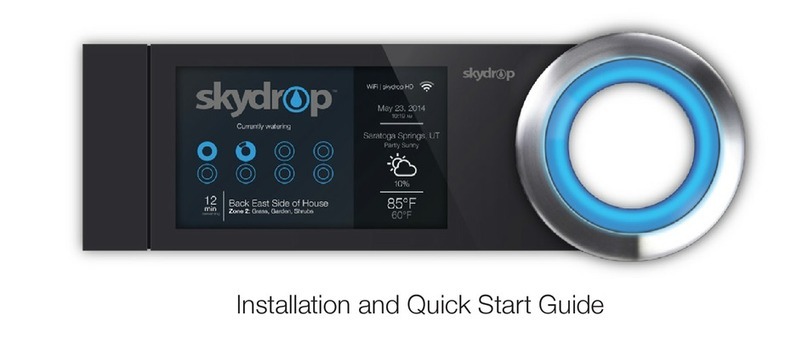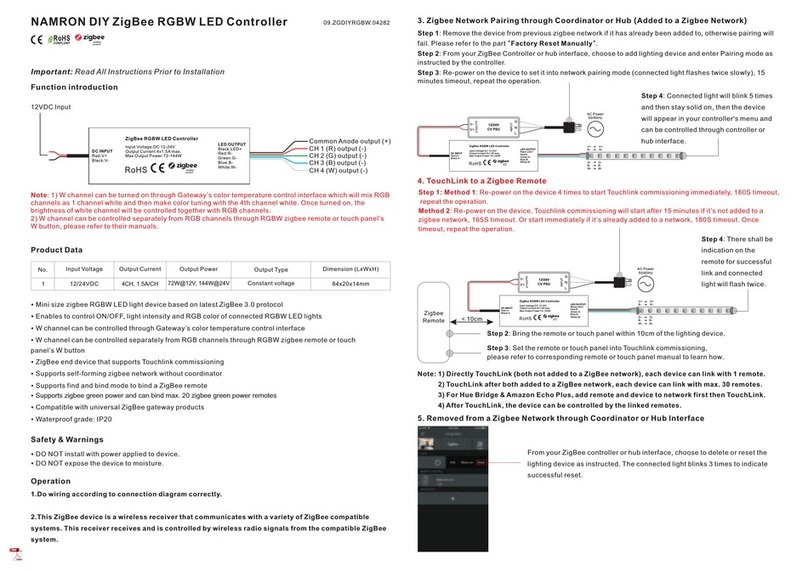BEINAT GS300-Mc User manual

Belonging to
Important: Assembly / maintenance of the appliance must be carried out by qualified personnel and in
accordance with applicable laws and regulations.
The manufacturer assumes no responsibility for the use of products that have to comply with particular
environmental and / or installation standards.
Importantnote
Before connecting the equipment, it is recommended that you read the instruction manual carefully and keep
it for future reference. It is also recommended to perform the electrical connections correctly as per enclosed
drawings, observing the instructions and the Standards.
N.B. Refer to the documentation in all cases where the symbol ison the side
Channel: Beinat gas solutions
Electricconnections alsoavailable on
CONFORMITY
Installation
and user guide
EN50194
EN 45544-1-3
EN 50270
EN 61010-1
Compliant EN 60079-29-1
Installation EN60079-29-2
Reports issued by TUV Italia
INSTALL IN SAFE
AREA, NO ATEX
Control Unit from 1 to 3 Conventional sensors GS300-Mc
Rev. 6
The GS300-Mc control unit has been designed and built according to European regulations to flexibly detect the
presence of toxic and/or explosive gas and OXYGEN, through the connection of 3 remote probes.
A microprocessor is used tocreate a complete surveillance and control system with maximum flexibility. Thanks to this
and its other features GS300-Mc is suitable for civil use, industrial use and small underground car parks.
The GS300-Mc control unit has three danger levels:
1st LEVEL, 1st Alarm. This was set to 8 % of L.E.L. (120ppm)
2nd LEVEL, 2nd Alarm. This was set at 13% of L.E.L. (200ppm)
3rd LEVEL, Main Alarm. This was set at 20 % of L.E.L. (300ppm)
For oxygen the centrol unit GS300-Mc presents three levels of danger which are:
1st Pre-Alarm. Both in deficiency and excess of Oxygen.
2nd Pre-alarm. Both in deficiency and excess of Oxygen.
Main alarm. Both in deficiency and excess.
To facilitate event readings, the control unit has a front panel with 4 LEDs indicating which probe is currently being
monitored in rotation, and a display showing the gas concentration measured.
Other technical features make this controlunit extremely versatile and reliable; for example, by using a series of micro-
switches it is possible to:
Select or disable the probe when not installed or faulty;
Select the type of gas to be detected (toxic or explosive);
Choose the relay functioning mode (pulsed or continuous);
Choose to enable or disable of the intrinsic safety.
The GS300-Mc has the prerequisite to be able to test "TEST" in two different ways:
1) System Test TEST. Pressing the TEST button tests the entire system,including the relays and accessoriesconnected
to it.
2) Maintenance TEST. With special arrangements (see page 8) you can enable the function of:
Exclusion of the general alarm relay for a maximum duration of 60 minutes.
The IP44 external structure was designed for installations onwalls, or on electricalpanels by means of special brackets.
In addition to the alarm signal light, it is fitted with an internal buzzer.

CHECK the integrity of the probe after having removed it from the box.
Check that the data written on the box correspond to the type of gas used.
When doing the electrical connections, follow the drawing closely.
Any use of the detector for purposes other than the intended one is considered improper, and as
a result of which BEINAT S.r.l. therefore disclaims any responsibility for possible damagescaused
to people, animals or objects.
IMPORTANT: The operation test should not be carried out with the gas tap as this does not guarantee
a sufficient concentration to activate the general alarm.
TERMS and EXPECTATIONS: The installation of the GS300-Mc probe, its ordinary and extraordinary maintenance,
and its out of service removal at the end of the functional life guaranteed by the manufacturer, must be carried out
by authorized and/or specialized personnel.
Do not allow it to become wet.
The probe can be seriously damaged when immersed in water. Remember that the probe has a protection degree IP44.
Do not drop it.
Heavy knocks or falls during transportation or installation can damage the appliance.
Avoid abrupttemperature fluctuations.
Sudden temperature variations can cause condensation and the probe could work poorly.
Cleaning
Never clean the device with chemical products. If necessary, wash with a moist cloth.
Absolutely avoid using any cloth dipped in thinners, alcohol and chemical detergents.
Precautions
Technical Specifications
Page 2
MAINTENANCE
The user periodically (every 6 months) must perform a check of the operation of the
control unit by spraying a suitable test gas at the base of the probes connected until the
alarm condition is reached.
• At least once a year make a more accurate check by a specialist technician.
• Disabling the detector must be carried out by qualified personnel.
Main Power Supply
boxed version
................................................................ 110/230VAC 50/60Hz ±10%
Secondary Power Through Battery Max 2,2 Ah (Optional) ..................................................... 12 V ±10%
Battery Charger max 2.2 Ah .................................................................................................... Controlled
Power Demand ...........................................................................................................8,3W max @ 230V
Power Demand ................................................................................................................4W max @ 12V
Relay Contact Range ................................................................... 10A 250VAC resistive - 5A 30Vdc resistive
1st Pre Alarm ......................................................................................... Set to 8% of L.E.L. or 120ppm CO
2nd Pre Alarm ....................................................................................... Set to 13% of L.E.L. or 200ppm CO
Final Alarm ......................................................................................... Set to 20% of L.E.L. or 300ppm CO
..
Monitored Gas Indication ............................................................................... Through backlit color display
Number of Conventional Sensors that can be connected ....................................................................... 3
Micro-switches to include or exclude the probes ................................................................ 1 per each probe
Connectable probes ............................. Semi-conductor, Catalytic, Electrochemical cell, Pellistore, Infrared Rays
Type of faults detected by Fault Circuit ................................................... Interruption, short circuit, or wear
Input Signal ......................................................................................................... 4 ÷ 20 mA on 220 ohm
Device Accuracy ........................................................................................................................ 1% FS
Response Time ............................................................................................................................ < 2”
Control Unit .................................................................................................................... microprocessor
Functioning Temperature ................................................................................................... -10°C ÷ +60°C
Waiting, blinking period ........................................................................................................... 90 seconds
Manual Test ............................................................................................................................ Built in
Max. distance between probes and unit .......................................................................................... 100 m
Cable diameter for connecting probes ............................................................................................. 1 mm2
Connection: The cable of connection of the probe must not be installed together with the power cables.
Otherwise, make sure to use a shielded cable
Size DIN EN 50092 ........................................................................................................... 144*144*110
Degree of Protection ..................................................................................................................... IP44
Warranty.......................................................................................................................................3 years
WARNING! Actions to be taken in case of alarm
Gas
1) Put out all free flames.
2) Close the main gas tap or the LPG cylinder tap.
3) Do not turn any lights on or off; do not turn on any electrical device or appliance.
4) Open windows and doors in order to increase ventilation.
If the alarm stops, its cause must be found and the relevant consequent measures taken.
If the alarm continues and the cause of gas presence cannot be found or removed, abandon the building
and call the emergency services when outside (fire department, distributors, etc.)
IMPORTANT: The operation test should not be carried out with the gas tap as this does not guarantee a sufficient concentration
to activate the general alarm.
Warning !!
If you have the following symptoms: vomiting, sleepiness, or else, go to the closest first aid
station and inform the operators that you could have been poisoned by Carbon Monoxide, or
by an excess or deficiency of oxygen

Main Compatible Probes
140
140
140
108
77
Page 3
Screws5 ma
Brackets
144
144
GS300-Mc
000LEL
ppm
1 2 3
SG500 Catalytic IP30 Domestic Use CH4-LPG 0÷100% LEL 4÷20 mA ±5 % NO NO
SG544 Catalytic IP44 Tertiary CH4-LPG 0÷100% LEL 4÷20 mA ±5 % NO NO
SGM595 Catalytic IP55 Tertiary See catalogue 0÷100% LEL 4÷20 mA ±5 % Yes NO
SGM595/A Catalytic IP66 Zone 2 See catalogue 0÷100% LEL 4÷20 mA ±5 % Yes NO
SGM533 Catalytic IP55 Tertiary See catalogue 0÷100% LEL 4÷20 mA ±5 % Yes Yes
SG800 Catalytic IP66 Zone 2 See catalogue 0÷100% LEL 4÷20 mA ±5 % Yes Yes
HCF100 SemiCondut IP55 Tertiary FREON 0÷300% ppm 4÷20 mA ±5 % NO Yes
SG895 Pellistor ATEX Zone 1 See catalogue 0÷100% LEL 4÷20 mA ±5 % Yes NO
SG580 Catalytic IP66 Zone 2 See catalogue 0÷100% LEL 4÷20 mA ±5 % Yes NO
SGF100 Catalytic IP64 Zone 2 Methane 0÷100% LEL 4÷20 mA ±5 % Yes Yes
SGF102 Catalytic IP64 Zone 2 LPG 0÷100% LEL 4÷20 mA ±5 % Yes Yes
SGF104 Optical Fluores IP64 Zone 2 Oxygen In % 4÷20 mA ±5 % Yes Yes
SGF106 SemiCondut IP64 Zone 2 FREON 0÷300% ppm 4÷20 mA ±5 % Yes Yes
SGF108 Elettrochimica IP64 Zone 2 H2S 0÷300% ppm 4÷20 mA ±5 % Yes Yes
SGF110 Electrochemical IP64 Zone 2 C O 0÷300% ppm 4÷20 mA ±5 % Yes Yes
SGF112 Catalytic IP64 Zone 2 Hydrogen 0÷100% LEL 4÷20 mA ±5 % Yes Yes
CO100r Electrochemical IP55 Tertiary CO 0÷300% ppm 4÷20 mA ±5 % Yes Yes
CO100Ar Electrochemical IP66 Zone 2 CO 0÷300% ppm 4÷20 mA ±5 % Yes Yes
SG800duct Catalytic IP66 Zone 2 CH4LPG 0÷100% LEL 4÷20 mA ±5 % Yes Yes
CO200duct Electrochemical IP66 Zone 2 CO 0÷300% ppm 4÷20 mA ±5 % Yes Yes
Application in:
Domestic: family accommodation. Local boilers up to 70 kW-h
Tertiary Areas: Large Rooms Boilers, Workshops, Material Deposits, Industrial Kitchens, Large Buildings, Buildings.
Zone 2 - Mixed IP66 ATEX: High probability of escape, high risk locations, premises for which applicable regulations apply.
Zone 1 - Hazardous Area, High Risk Hazards, Rooms for Which Regulations, Tanks, Control Valves are in force.
Probe Sensor Degree Suitable for Gas Range Output Precis. Calibration Relay
Protec. Detected Working Automatic
Sensor

Page 4
Componentsand commands
1) LED ON. It blinks for about 2 minutes (warm up time) when the mains power is supplied. When ready, the
LED stays on without blinking.
Note: during warm up the control unit is not able to detect the presence of gas.
2) BATTERY LED. It lights up (fixed) when no mains power is present and the control unit is supplied by a 12Vdc
battery. It blinks when the battery is flat.
3) OVER LOAD PROBES LED. If this LED turns on, it means there is a short circuit or high current absorption
in the probes.
4) OVER LOAD BATTERY LED. If this Led turns on, it means the battery is not connected properly, or it has
an anomalous voltage absorption.
5) TEST BUTTON. Pressing and holding down this button, you can obtain a gas leakage simulation. In order
to perform this operation no failures or alarms should be present.
6) RESET BUTTON. This button is pressed to clear all memories, or to restore the control unit after a failure.
7) 1st Alarm LED. This LED will light up when the gas concentration level has reached 8% of LEL, or 120ppm
(ref. CO), and the 1st threshold relay contact is closed. The relay disenergizes when the 13% of LEL, or 200ppm
CO, threshold is exceeded.
8) 2nd Alarm LED. This LED will light up when the gas concentration level has reached 13% of LEL, or 200ppm
(ref. CO), and the 2nd threshold relay contact is closed. The buzzer will issue a low frequency sound. The relay
disenergizes when dropping below the 13% of LEL, or 200ppm CO, threshold.
9) MAIN ALARM LED. This LED will light up when the gas concentration level has reached 20% of LEL, or
300ppm (ref. CO), and the MAIN ALARM relay contact is closed. The buzzer will issue a high frequency sound.
10) FAULT LED. This LED blinks when one of the connected probes is faulty, if there is an interruption in the
cable connection, or if an error was made during wiring. When this LED is blinking, the device is no longer
capable of detecting. To reactivate the device, the damaged probe must be repaired or disabled using the
internal micro-switch (see chapter 6 paragraph A) and then the RESET button must be pressed.
11) DISPLAY backlight colours. The symbols are illustrated in the draw.
a) The symbol of the battery light on when the GS300-Mc is powered with an external battery.
The drawn battery indicates the state of load of the battery and when it blinks it means that the battery is low.
b) The number on the display indicates the concentration of gas detected.
The exchange of data of every connected probe is every about 4 seconds.
c) The letters ppm means when the connected probe detects Toxic gas.
The letters LEL means when the connected probe detects Explosive gas.
d) The numbers in the rectangle “1 2 3 “: are the probe connected; They lidht up in sequence and identify
the monitored zone.
e) The timing symbol lights when GS300-Mc is in warm up phase, the same time its begins the count down
Main Alarm
2 Alarm
1 Alarm
Fault
O N
Battery
Test
Reset
Over Load
Battery
Over Load
Probes
(1)
(2)
(3)
(4)
(5)
(6)
(11) (7)
(8)
(9)
(10)
GS300-Mc
100ppm
1 2 3
%LEL
Switch1
Intrinsic safety selection
Switch 2
Main alarm relay functioning mode
Switch 3
Maintaining of the memory of alarm,only when
you set the CO gas
Switch 4
Selecting OXYGEN mode
Power terminal block Sensors terminal block
S1 S2 S3 S4 1 2 3 4
Deleting or disabling the probes
monitored gas type selection

Page 5
Components and Commands continue
11) DISPLAY. The display below is represented with all its segments and indications
a) The number on the display indicates the concentration of gas detected.
b) The number drawn on the display indicates which probe is monitored
The exchange of data of every connected probe is every about 4 seconds.
c) The letters ppm means when the connected probe detects toxic gas.
The letters LEL means when the connected probe detects explosive gas.
d) The timing symbol lights when the control unit is in warm up phase, the same time its begins the count
down.
c
000
a
d
LEL
ppm
1 2 3 b
IMPORTANT NOTE
The installation of the detector is not exempt from ...… The compliance with all regulations concerning the characteristics,
installation and use of gas appliances. The ventilation of the spaces and the elimination of combustion products are described
in the UNI norms according to ART. 3 LAW 1083 / 71 and relevant legal provisions.
Description of Display
The BX444Mc is equipped with a display backlight color to facilitate the recognition of the state of the probe
monitored.
The data exchange for each probe connected happens every 4 seconds.
00LEL
300ppm
The blu display shows
the percentage of
oxygen. normal
condition
20.6
%
20LEL
FAU
The green display
shows an absence of
leakage of gas, normal
conditione
The display shows with
red color a concentration
of explosive gases in
% LEL greater than a
threshold alarm.
The display shows with
red color a concentration
of toxic gases ppm
greater than a threshold
alarm.
The yellow display shows
a fault of one or more
probes.
< 19.9 %
> 21.9 %
< 19.5 %
> 22.5 %
< 18.5 %
> 23.5 %
1st Pre-Alarm
2nd Pre-Alarm
Main alarm
< Oxygen deficienty
> Excess Oxygen
The BX444-Mc presents three
levels of danger which are:

Page 6
Legend setting switches
S1) switch group reserved to the probe N° 1
S2) switch group reserved to the probe N° 2
S3) switch group reserved to the probe N° 3
1) Selection of positive safety
2) Operating mode of the main alarm relay.
3) Selection of MEMORY.
N.B. You can remove the selection of memory
when the gas CO is selected.
4) Selection for oxygen detection
Diagram of the terminal block relay
WARNING.
Before connecting to the mains power, ensure the voltage is correct.
Carefully follow the instructions and the connections according to Regulations in force, keeping in
mind that the signal cables should be laid separate from the power cables.
An automatic cut-off switch (appropriately identified as devicesectioning of the detector) should be
incorporated in the electrical system, adequatelylocated and easily accessible.
Electrical Connections
Power supply
230VAC
PH N 4 5 6 7 8 9 10 11 12
CNC
NO
CNC
NO
CNC
NO
CNC
NO
Fault 1st threshold 2nd threshold Main alarm
PLEASE NOTE!
All relays are free of voltage
Connection of probes and eventual battery
12V
1 2 3 4 5 6 7
+ +
Optional
3 2 1
Probe 1 3 2 1
Probe 2 3 2 1
Probe 3
R1 R2 R3
Switch1
Intrinsic safety selection
Switch 2
Main alarm relay functioning mode
Switch 3
Maintaining of the memory of alarm,only when
you set the CO gas
Switch 4
Selecting OXYGEN mode
Power terminal block Sensors terminal block
S1 S2 S3 S4 1 2 3 4
Deleting or disabling the probes
monitored gas type selection

Page 7
Connections of a solenoid valve Normally Closed with Positive Safety
Connections of a solenoid valve Normally Closed without Positive Safety
Control unit power supply and connection of a solenoid valve with sirens to 12 VDC trough
an alternative source and recharge battery.
NC NA
Ph
N
PH N 4 5 6 7 8 9 10 11 12
Power supply
230 VAC
CNC
NO C
NC
NO
CNC
NO
CNC
NO
Fault 1°Threshold 2° Threshold Alarm Solenoid valves
Ph
N
PH N 4 5 6 7 8 9 10 11 12
Power supply
230 VAC
CNC
NO C
NC
NO
CNC
NO
CNC
NO
Fault 1°Threshold 2° Threshold Alarm Solenoid valve
Connection examples
Power supply 230/12V
Diode
1N 5406 3 2 1
Probe 1 3 2 1
Probe 2 3 2 1
Probe 3
Solenoid valve GAS and Sirens 12 VDC
1 2 3 4 5 6 7
+ + R1 R2 R3
12 V
It's not possible to connect directly solenoid
valves or sirens 12V.dc. to the GS300-Mc

Page 8
Components and Commands continue
Description of Micro-switches
Installing, uninstalling or disabling probe
Through the Micro switches (see drawing below) on the control unit, you can to activate or to deactivate 3
Zones.
You can connect 3 probes to the GS300-Mc. The control unit is tested with the probes connected
In some installations, you may need only one probe. In this case we will proceed to disable a probe, to do this
select the switch of the probe (zone) concerned.
These micro-switches are also used to disable one or all probes in case of failure
N.B. The microswitches are also used for switching off in case of failure
A row of LEDs numbered from 1 to 3 and called PROBES has been fitted on the GS300-Mc. These LEDs are
lit with a 4 second frequency representing the connected probes, and indicate the probe being read on the
display.
In case of alarm: The LED that represents the probe stops for about 15 seconds. This is done in order to
identify the relevant zone or zones easily.
The gas percentage measured by the probe appears on the display and is maintained for 15 seconds. On the
next pass, the LED (probe) will be maintained again and the alarm will be issued.
In case of fault: The LED of the relevant probe starts blinking and remains lit. The display will show the “FAU”
(Fault) fixed indication, and the buzzer will issue a continuous sound until:
1) The repair has been carried out;
2) The relevant probe has been disabled using the micro-switch.
Probe indication
Leds from n°1 to n°3
Zone 1 Zone 2 Zone 3
Micro-switch (1) to enable or to disable the probe.
Position ON enabled - In position OFF disabled
000LEL
ppm
1 2 3
The simultaneous and prolonged pressure for 5 sec of the "TEST" and "RESET" buttons enables the test-on mode in
which the control unit does not switch the general alarm relay fora period of 15 minutes; Not evenpressing the external
manual button.
A further keypress in the same mode extends the time of 15 minutes to a maximum of 60 minutes.
In this mode, before the passage from the current channel to the next, the "TESt-On" string is displayed followed
by the minutes of the general alarm relay being switched off.
You can terminate this mode before the natural deadline by resetting the control unit by pressing 3 consecutive
times and within 5 seconds the RESET button.
Mantinance Test

Page 9
Components and Commands continue
Selection of the type of gas monitored by each probe
The control unit if fitted with four micro-switches in order to select the type of gas that the connected probes
should monitor.
The LEL reading is obtained by shifting the switch to ON. Explosive gas (see display)
The ppm reading is obtained by shifting the switch to OFF. Toxic gas (see display)
Relay’s working mode and the memory of the Main alarm
Switch 1 – Selection of the positive safety
In the ON position, the positive safety function is enabled.
The relay is energized after performing the waiting phase and switches when the GS300-Mc is in main alarm
In the OFF position, the positive safety function is disabled.
The relay is energized only when the GS300-Mc enters the state of main alarm
Switch 2 – Functioning Mode of main alarm relay.
In the ON - Continuous function, the relay remains closed until the RESET button is pressed.
In the OFF - Impulse function, the relay remains closed for 5 seconds, and then disenergizes afterwards.
Zone 1 Zone 2 Zone 3
Micro-switch (2) to select the type of gas monitored
Position ON lreading in LEL - Explosive gas
Position OFF reading in ppm - Toxic gas
Zone 1 Zone 2 Zone 3
Micro-switch 1Positive Safety
Micro-switch 2working mode of the Main
Alarm relay

Page 10
When all else fails, read instructions
30 cm Light Gases
30 cm Heavy Gases
Middle Height Volatile Gases
SENSOR INSTALLATION INFORMATION
Installation and positioning of the probe
The GS300-Mc control unit belongs to group II and must be installed in a safe area;
Outside the ATEX zone, however, not in boiler rooms or engine room.
The control unit must be accessible and visible to the user.
The GS300-Mc is designed so that it can be mounted externally or built into electrical panels.
The Control Unit complete cabinet is an equipment suitable for wall mounting and is powered by 110/240 VAC with
IP44 protection
When installing, it is good to use the normal care that an electronic equipment requires:
- Install the equipment away from excessive heat sources.
- Avoid liquids coming into contact with the control unit, remembering that its external structure has IP20 degree of
protection if installed on the Boxed version (cabinet) supplied to the source is IP44.
The Sensor must be selected with an IP degree depending on the area to be controlled (Kitchens, Boiler
Rooms, Laboratory, etc.) by selecting one of the probes from Beinat from IP30 to ATEX. see page 3
Position of thedetection sensors
You can connect many types of remote probes to this unit. Therefore, they should be positioned at different heights
depending on the type of gas to be detected.
These heights are:
- 30 cm from the lowest point of the floor in order to detect: Heavy gases (L.P.G. etc.)
- 30 cm from the highest point of the ceiling in order to detect: light gases (Methane, etc.)
- 160 cm from the lowest point of the floor in order to detect: volatile gases (CO, etc.)
It is importanttonote that the remote probes should be installed according to the following restrictions:
1) The probes should not be placed near the appliances to be controlled (boilers, burners, industrial kitchens, etc.)
but on the opposite side.
2) The sensors should not be affected by smoke, vapour, and moving air, as they could distort their measurement.
3) The sensors should not be placed near sources of heat, ventilators or fans.
It should be noted that the internal GAS sensors of the probe are perishable components with a variable average
life span from 5 to 6 years (you can request the relative table). Therefore, after this period of time has elapsed it
is advisable to replace them.
4) The control of operation and maintenance and / or extraordinary must be carried at least once a year. good
to keep
When turning on leds fault is necessary make the replacement of the probe by a specialized technician.

Page 11
Turning on the GS300-Mc
1) Apply power using the proper switch. This switch should be fitted with protection fuses.
2) You will notice that some LEDs will light up in turn for about 20 seconds, so as to test the LEDs.
3) The Led ON continues to blink about 1.30 minutes after which remains steady light.
This indicates that the control unit is ready to detect.
4) By pressing the MANUAL TEST button, you get the simulation of a gas leak and the unit carries out the
following:
a) The 1st Pre-alarm LED lights up calibrated to 8% LEL or 120 ppm (referred to CO) switching the reference
relay.
b) The 2nd Pre-alarm LED lights up calibrated to 13% LEL or 200 ppm (referred to CO) switching the relay
the buzzer will issue a low frequency sound
c) The Main alarm LED lights up calibrated to 20% LEL or 300 ppm (referred to CO) switching the relay.
The Main alarm LED starts flashing; the buzzer will issue a hight frequency sound
When releasing the MANUAL TEST button, you will see the opposite: Only the Main Alarm LEDs and the Led
of 20% remain ON
The main alarm will persist as long as you do not press the RESET button, so canceling the alarm memory.
5) To complete the test please read the manual of the probe and perform sensor test by emitting gas with a
pre calibrated bottle.
6) to simulate the fault zone you only need to disconnect the probe return cable, the central will perform the
following actions:
-it lights in blinking mode the FAULT and the MAIN ALARM LED
- the buzzer sound continuously;
- the fault relay and the main alarm relay will switch.
Reconnect the return cable and press the RESET button to restore the control unit functioning
Troubleshooting and solutions before calling a technician
-If the device does not start up.
Check that the 240VAC mains power is correctly connected. If powered by the battery, check that the 12Vdc
power is correctly connected.
-If the Fault LED lights up.
Check that the probe cables are connected as in the drawing, they have not pinched the insulating sheath
Check that the voltage at the terminals 3-4, is greater than 11 VDC and less than 25 VDC
Check that at the terminals 3 and 5- (6-7) is present a voltage from a minimum of 0,8 VDC at a maximum
of 1,1 VDC
-If the Over Load Probe LED lights up.
Check: that the power polarity has not been inverted,that no short-circuit ispresent, that the probeswere not damaged
during installation, that no excessive current absorption is present.
-If the Over Load Battery LED lights up.
Check that the connection cables are not short-circuited, that the polarity has not been inverted, or that the battery
is not damaged
-If the Control Unit is repeatedly issuing an alarm.
Check that there are no gas leaks.
Check that together with the alarm signal is not also turn on the FAULT indicator, in this case, control the probes.
-If the Control Unit is issuing an alarm and does not shut off the devices connected to it.
Check that the wiring is correct and that the jumper that carries power to the relay has been set properly.
NOTA: All relays are voltage free; Check the connection drawing.
- If a 12Vdc solenoid valve, which does not work well,.
Direct connection of 12VDC solenoid valves or sirens to the control unit is not possible, having absorption in excess
of 100mA.
To connect a solenoid valve with superior absorption you must resort of an external battery.
The control unit gives a max current of 100mA.
Check the connection design.
013
2
1,1
V.
Voltmeter
WARNING.
This measurement should
be performed in clean air.
1 2 3 4 5 6 7
+ +
3 2 1
Probe 1 3 2 1
Probe 2 3 2 1
Probe 3
If other problems arise, a specialised and/or authorised technician and/or the Distributor of
BEINAT S.r.l. should be contacted directly.

BE - V 6 34 17
Control Unit GS300-Mc Lo styling è della b & b design
Dealer stamp
Purchase date:
Serial number:
Beinat S.r.l. following the purpose of improving its products, it reserves the right to modify the technical, aesthetic and functional characteristics
at any time and without giving any notice.
INSURANCE. This device is insured by the SOCIETÀ REALE MUTUA for the PRODUCT'S GENERAL LIABILITY
up to a maximum of 1,500,000.00 EURO against damages caused by the device in case of failures in functioning.
WARRANTY. The warranty term is 3 years from manufacturing date, in agreement with the following
conditions. The components acknowledged as faulty will be replaced free of charge, excluding the replacement
of plastic or aluminium cases, bags, packing, batteries and technical reports.
The device must arrive free of shipment charges to BEINAT S.r.l.
Defects caused by unauthorized personnel tampering, incorrect installation and negligence resulting from
phenomena outside normal functioning shall be excluded from the warranty.
BEINAT S.r.l. is not liable for possible damage, direct or indirect, to people, animals, or things; from product
faults and from its enforced suspension of use.
DISPOSAL OF OLD ELECTRICAL & ELECTRONIC EQUIPMENT.
This symbol on the product or its packaging to indicates that this product shall not be treated as household waste. Instead, it shall be handed over to
the applicable collection point for the recycling of electrical and electronic equipment, such as for example:
- sales points, in case you buy a new and similar product
- local collection points (waste collection center, local recycling center, etc...).
By ensuring this product is disposed of correctly, you willhelpprevent potential negative consequence for the environment and human health, which could
otherwise be caused by inappropriate waste handing of this product. The recycling of materials will help to conserve natural resources. For more detailed
information about recycling of this product, please contact your local city office, your household waste disposal service or the shop where you purchased
theproduct.
Attention: in some countries of the European Union, the product is not included in the field of application of the National Law that applies the European
Directive 2002/96/EC and therefore these countries have no obligation to carry out a separate collection at the “end of life” of the product.
Madein Italy
IP44
Technical support - laboratorio@beinat.com
BEINAT S.r.l.
Via Fatebenefratelli 122/C 10077, S. Maurizio C/se (TO) - ITALY
Tel. 011.921.04.84 - Fax 011.921.14.77
http:// www.beinat.com
Table of contents
Popular Controllers manuals by other brands

Baker
Baker Becker VRP-CH Series instruction manual
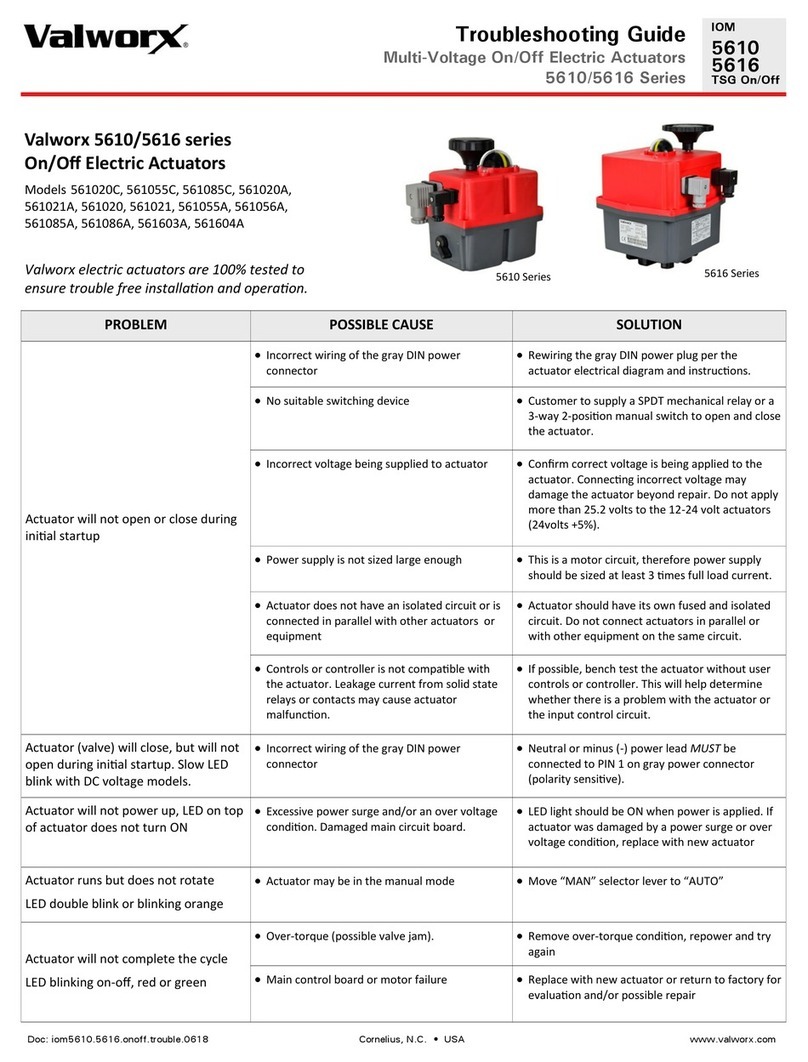
Valworx
Valworx 561020C troubleshooting guide
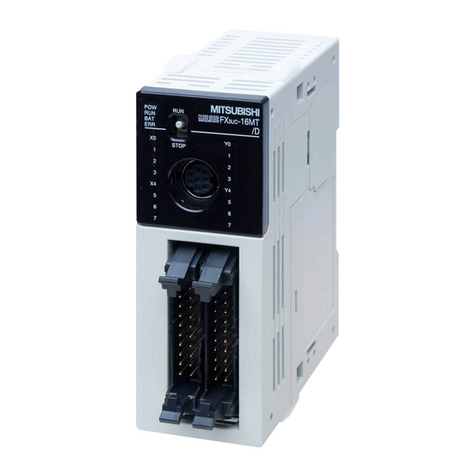
Mitsubishi Electric
Mitsubishi Electric MELSEC FX2NC-16MT-D/UL Hardware manual
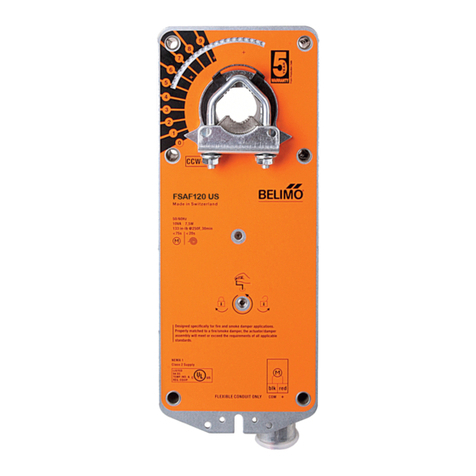
Belimo
Belimo FSNF instruction sheet

Telcoma Automations
Telcoma Automations FM420 Operation and Programming Instructions
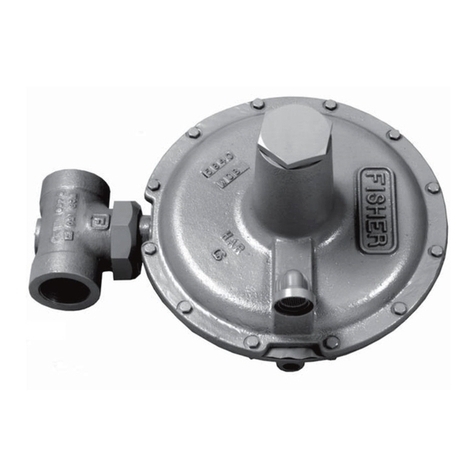
Emerson
Emerson Fisher Accu-Pressure Y693 instruction manual
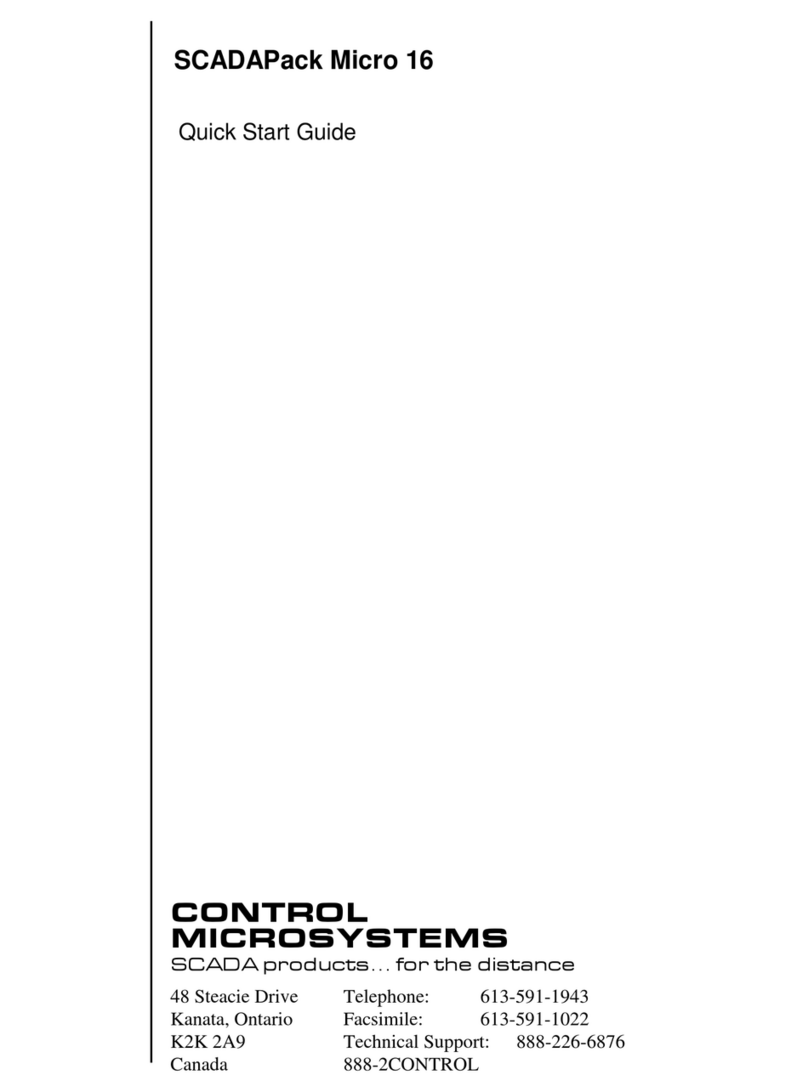
Control Microsystems
Control Microsystems SCADAPack Micro 16 quick start guide
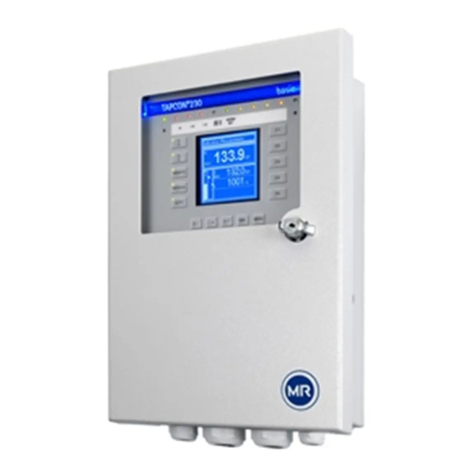
MR
MR TAPCON 230 Expert operating instructions

Hardie
Hardie Lawn Genie L30000W Installation and operation guide
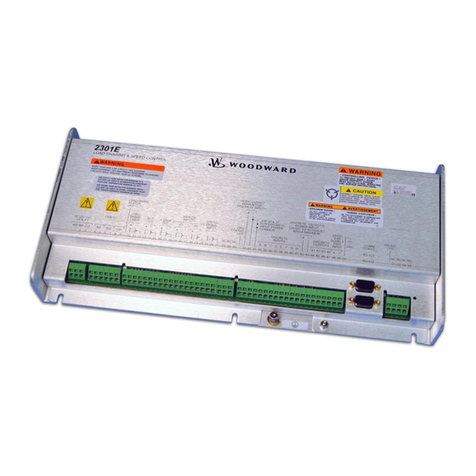
Woodward
Woodward 2301E Installation and operation manual
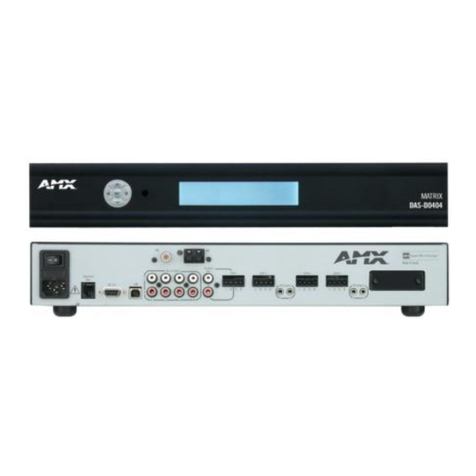
AMX
AMX DAS-D-0404 installation guide
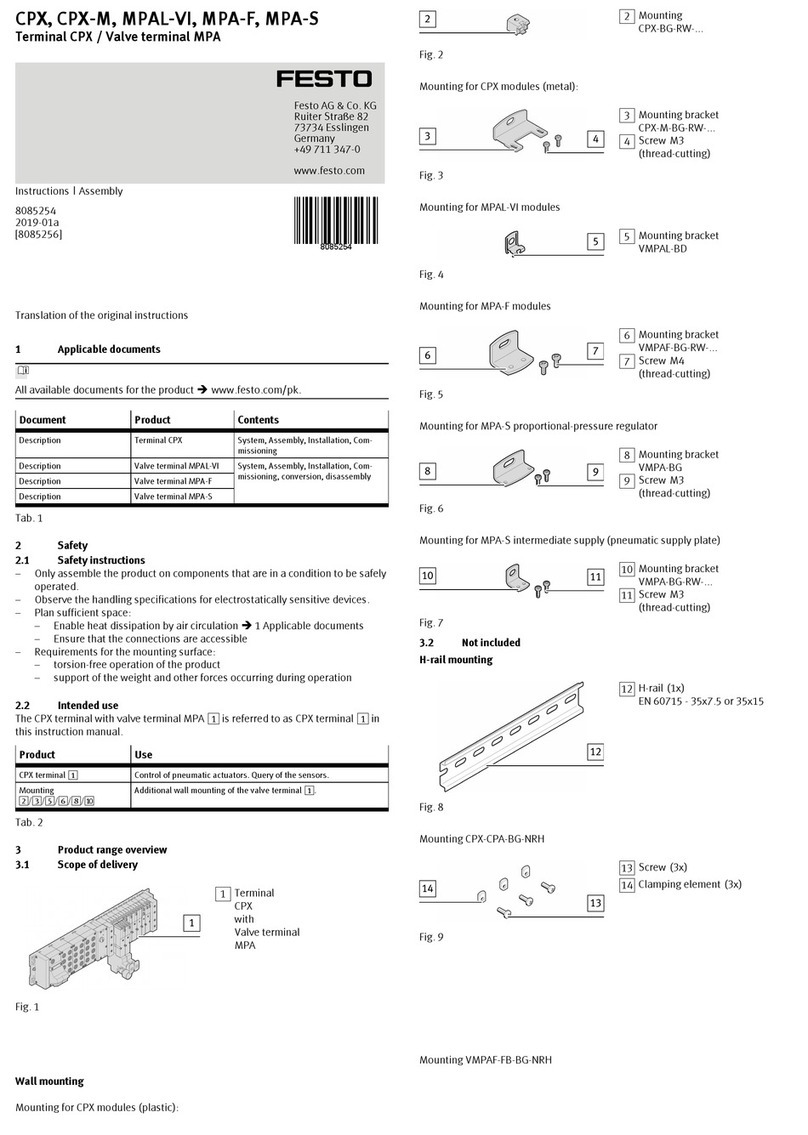
Festo
Festo CPX Instructions and Assembly


